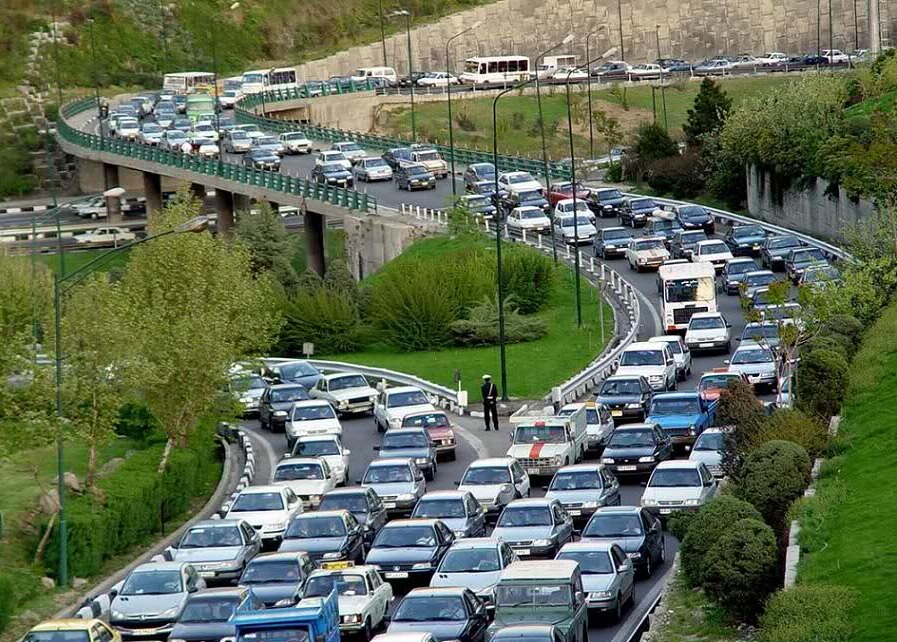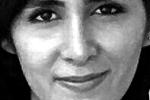The past three weeks have seen the worst ever traffic congestion in Tehran this year. The freezing temperature and air pollution are some of the contributing factors that have apparently compelled the people to use their own cars to get around in the overcrowded capital bursting with poor quality vehicles, both new and ageing gas guzzlers.
However, it seems that the bad weather is not the main culprit but just another stressor to further expose that bitter truth that the capital’s population plus the number of cars is growing at terrible speed. Add to this the omnipresent problem of insufficient road infrastructure, sheer lack of public transport and the poverty of efficient urban planning and planners.
During the past decade alone more than three million people migrated to Tehran Province from across the country. According to Tashakkori Hashemi, Tehran deputy mayor for transportation, there is one private vehicle for three persons living in the capital and many people live far from their workplaces. Nearly four million cars ply the streets of Tehran in a traffic system that can handle only two million.
A report conducted recently by Iran Urban Economics Scientific Association said 70% of Tehran’s population has exceeded the optimum level. In other words, it can provide only 2.3 million of its residents with decent living conditions. According to latest estimates, currently, 10 million people are living in the capital, and over 14 million are living in greater Tehran.
Rapid population growth and Tehran Municipality’s insatiable appetite for alternative means of revenue has led to the increasing number of construction projects that often eat into one or more traffic lanes. One often sees banners hanging at or near construction sites on main roadways and alleys “thanking the residents for their patience and understanding and apologizing for the inconvenience.”
The sites block the narrow roads and lanes sometimes for months on end further restricting space for moving traffic and parking space. Needless to say, finding a place to park a car on work days in and around the city is something very close to a miracle.
It should be recalled that when cars slow down somewhere on the main roadways, it indeed has a domino effect that stretches far and wide clogging busy junctions for hours. Small wonder that social experts and prominent economists have concluded that this city of more than 10 million people is simply not sustainable. Period.
According to the Statistical Center of Iran (SCI), during the first month of the current fiscal year (March 20-April 20), 1784 construction permits were issued by Tehran Municipality, and large chunks of public parks sold for construction of commercial towers.
It merits mention that the decades-old traffic zone for the capital too has not helped. The zone limits in the central parts along with the ‘ odd-even’ traffic rules that actually expand the restrictions on private cars moving on the north, south, east and west flanks are good but simply not producing the desired results.
Then there is the high and increasing number of avaricious car companies, dealers and middlemen wanting to make an extra buck. Hardly does a day pass when the cell phones are not inundated with SMS messages promoting the sale of a variety of flashy imported cars, all expensive models. The tempting offers include “easy installments with zero interest.”
With this ground reality and the relatively inexpensive price of gasoline compared to many countries in the developed and developing economies, one can only imagine what it will take to set the record straight regarding the seemingly unending traffic torture in the Iranian capital!
View From the TCC
Eqbal Shakeri, head of Tehran City Council Transportation Committee said recently that the traffic flow in the capital’s roadways and freeways has changed for the worse during the last three weeks.
“Redesigning and improving the roads and narrow alleys can alleviate traffic flow and therefore the measure should be placed on the municipality’s agenda.”
Adding new lanes or new roads and removing different barriers on passages are among the most important measures which can help ease the congestion, the TCC official says.
“Safe and cautious driving can and should improve the traffic flow on Tehran’s roads and streets by 20-40%.”
“We still don’t know the real causes of the sudden increase in traffic congestion across the city. Further investigation is necessary,” he said.



